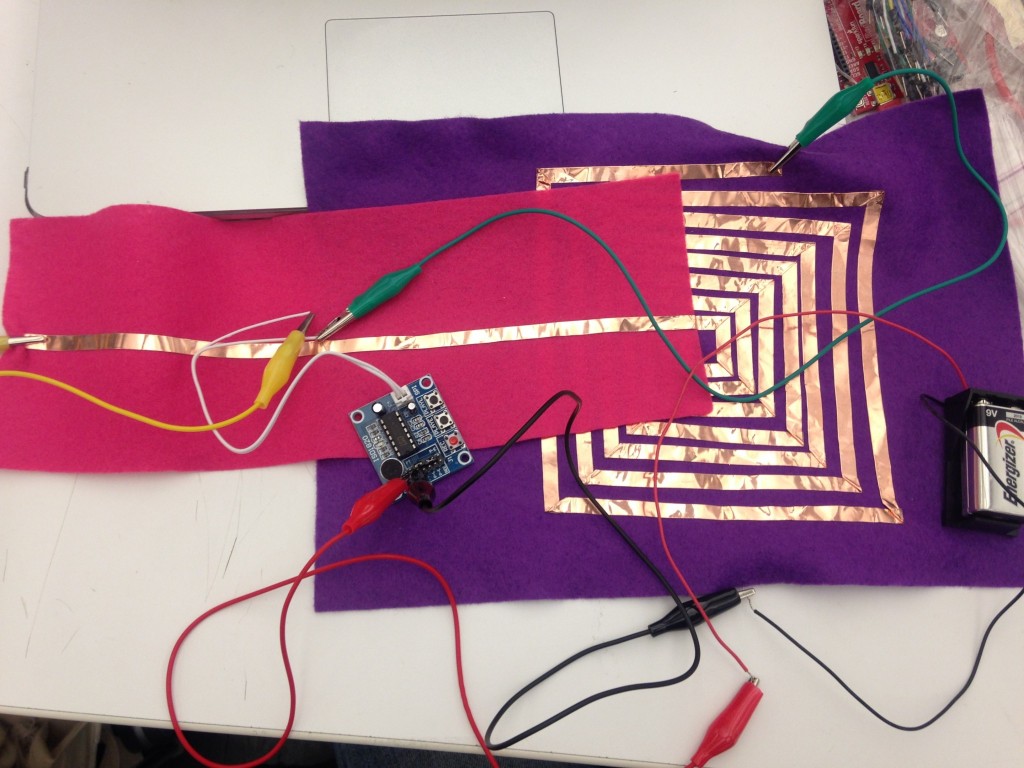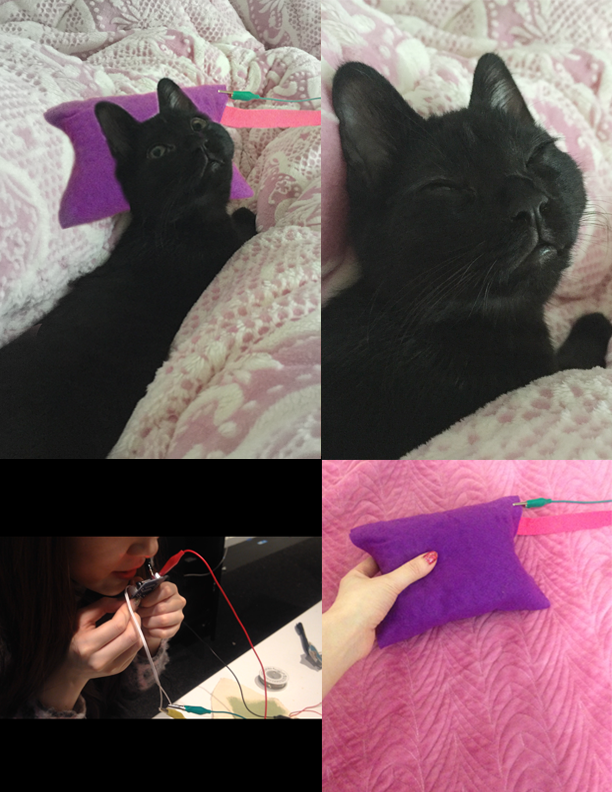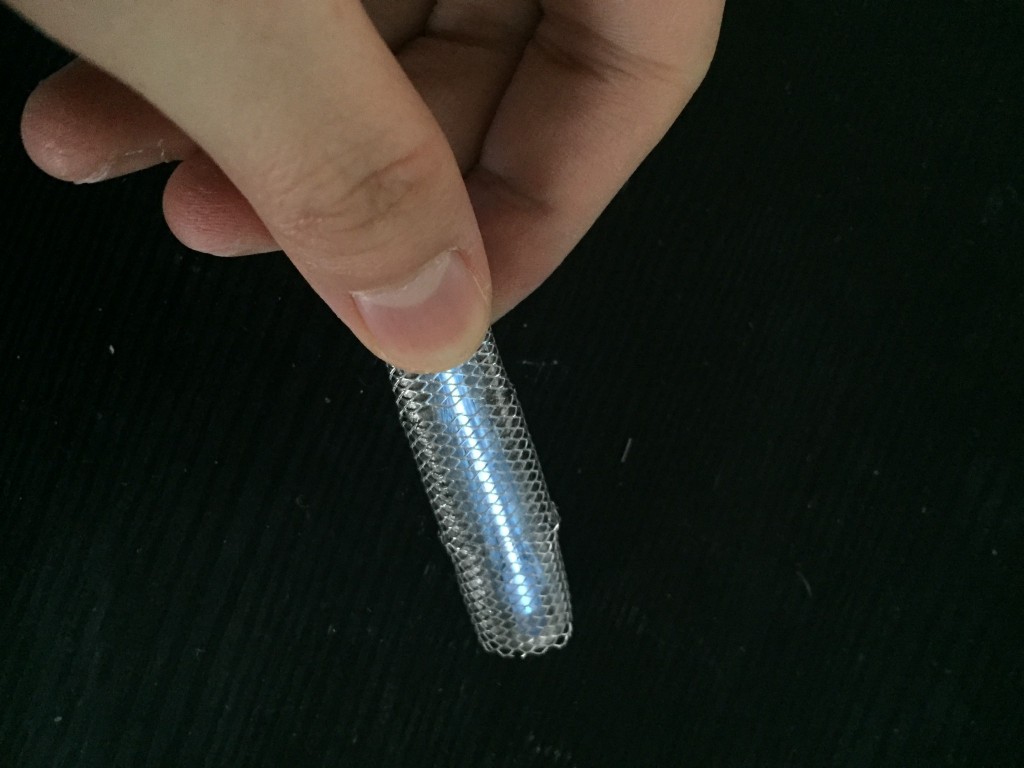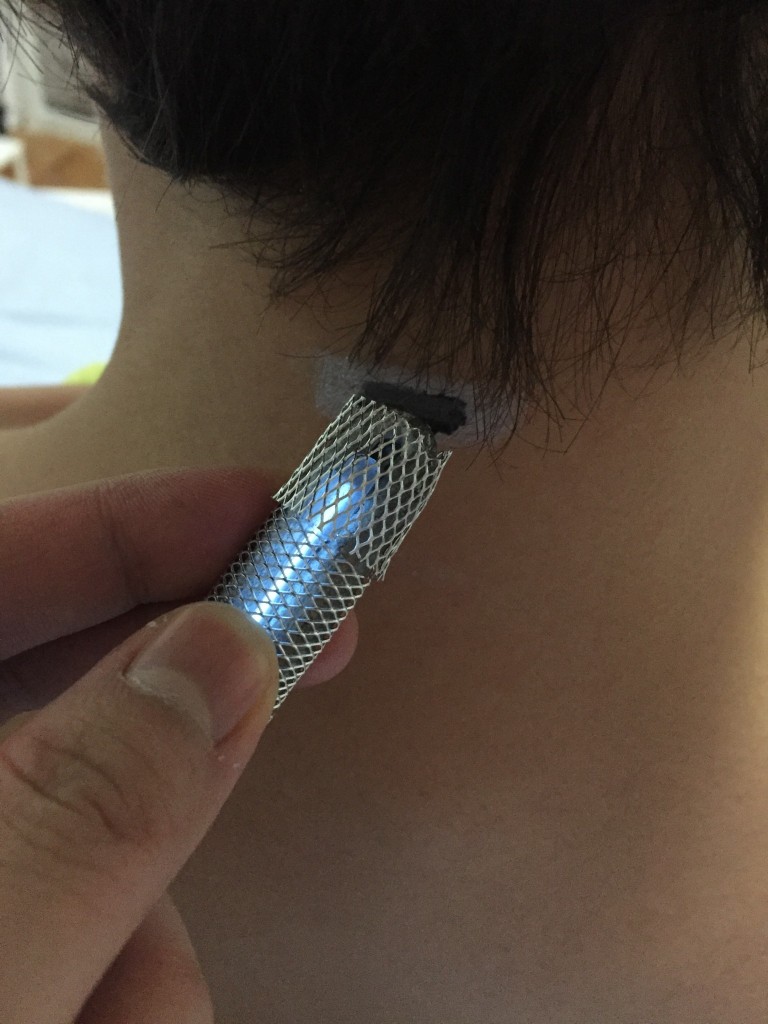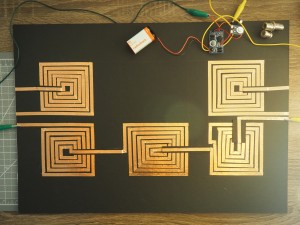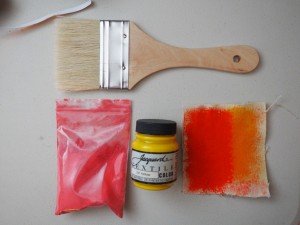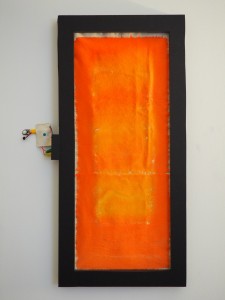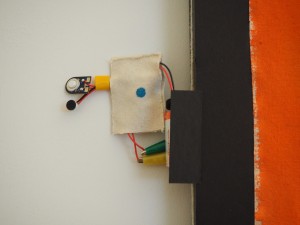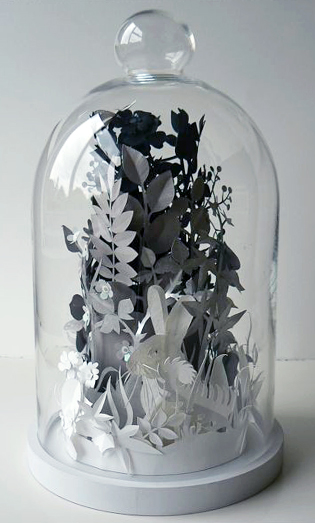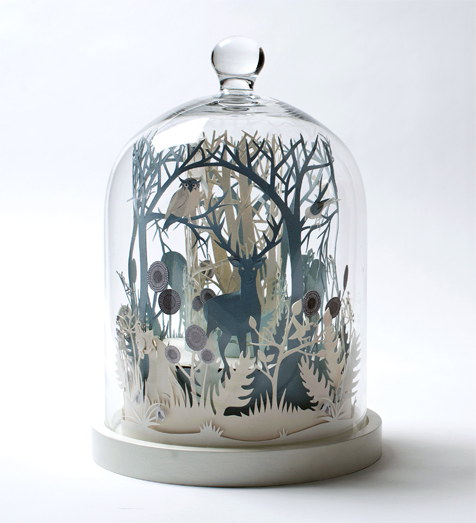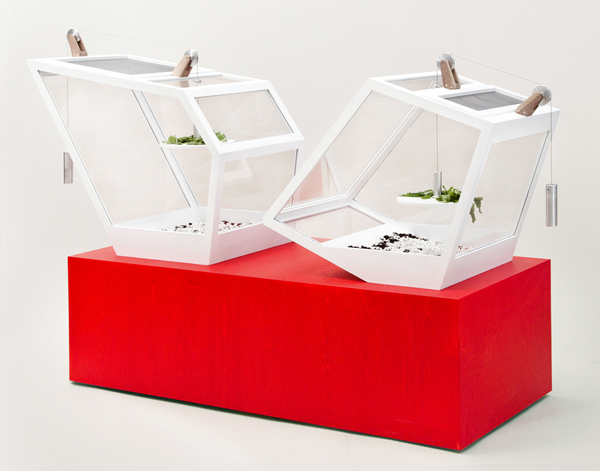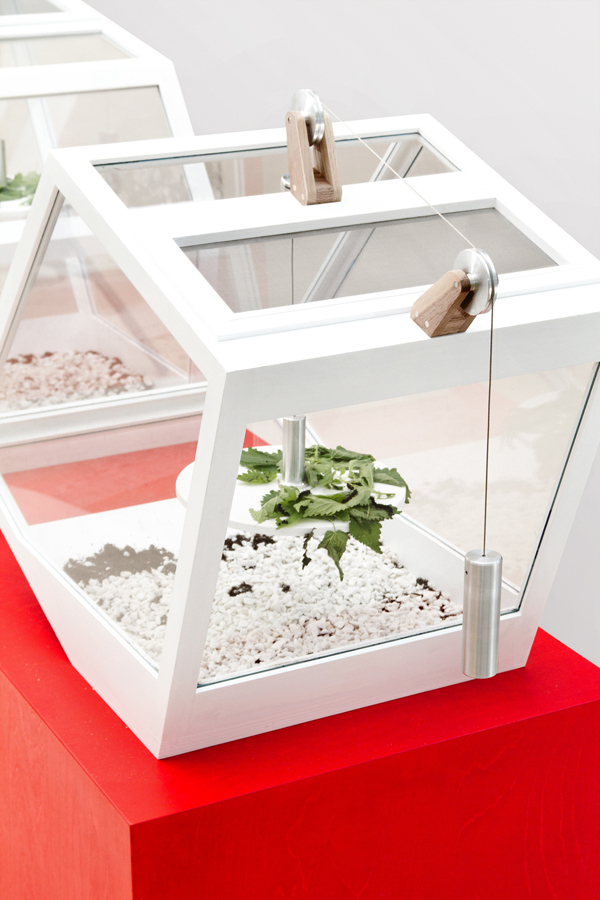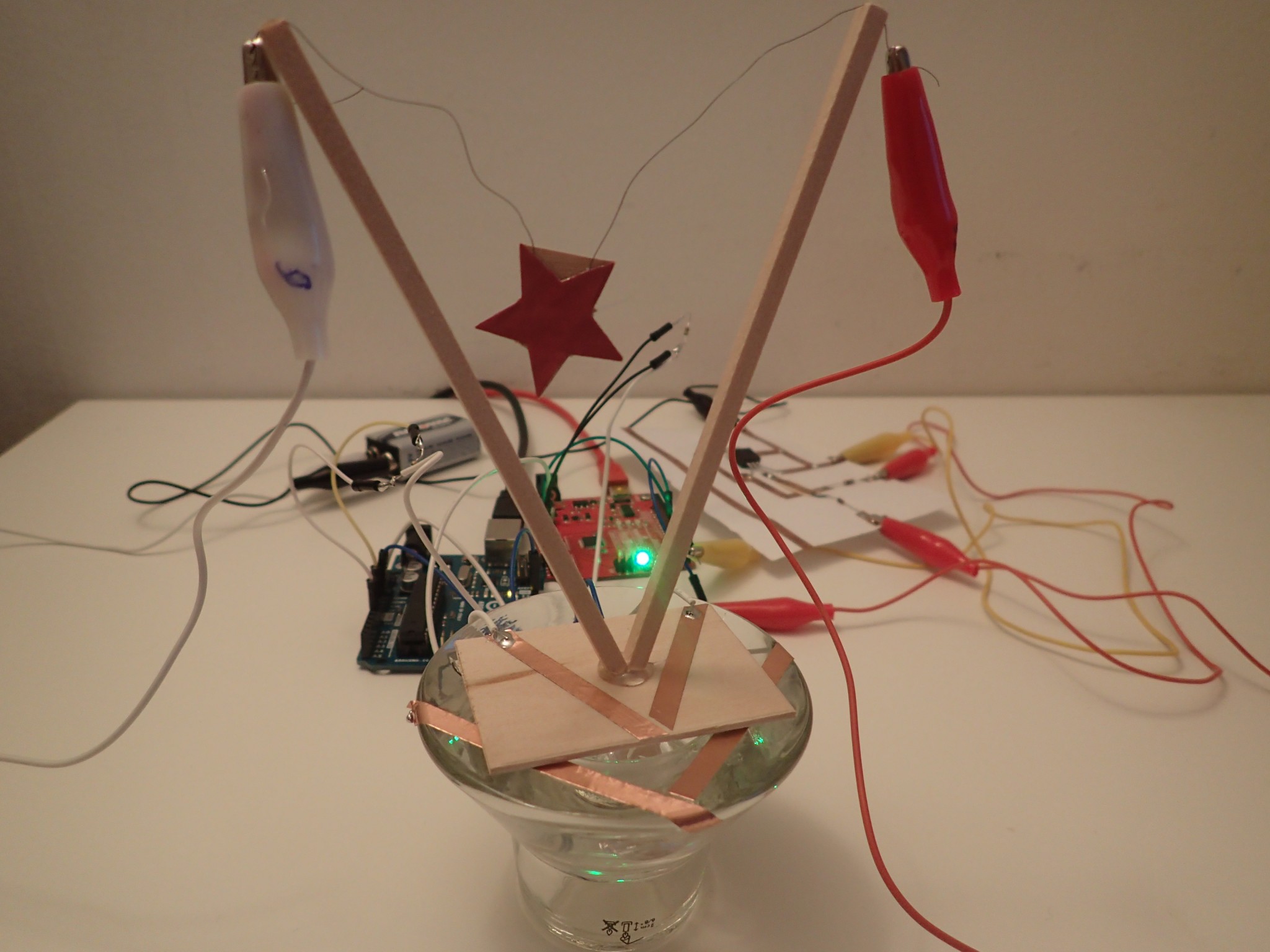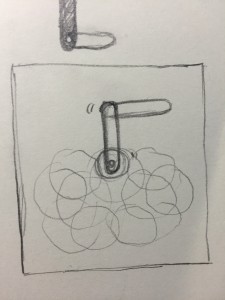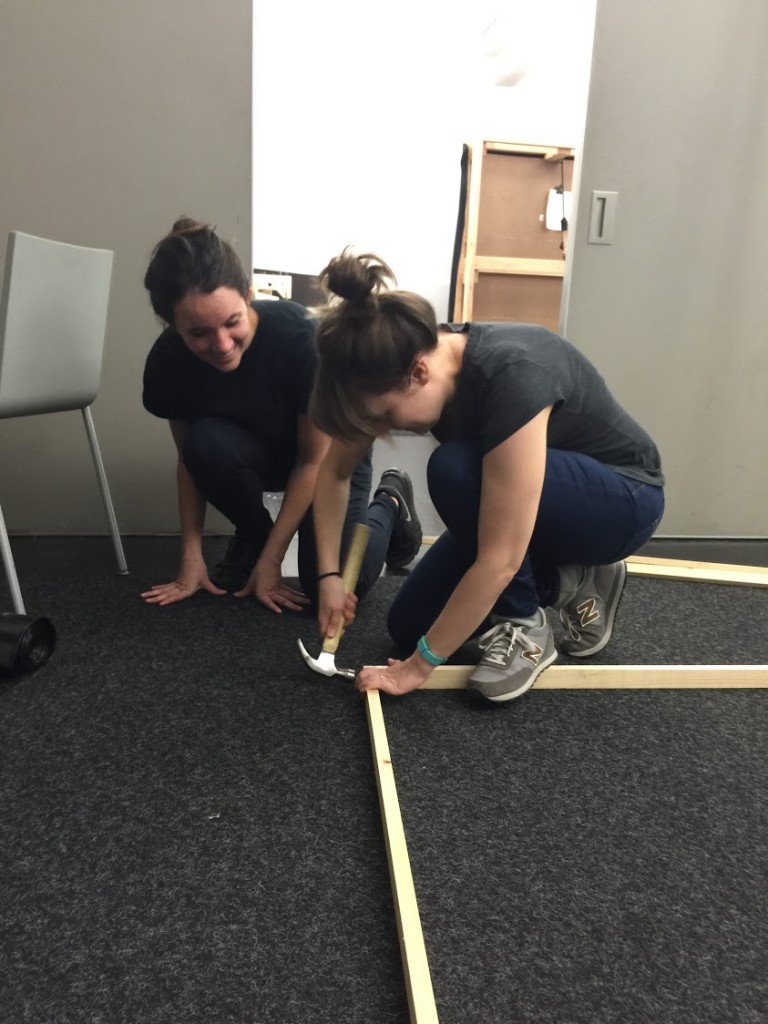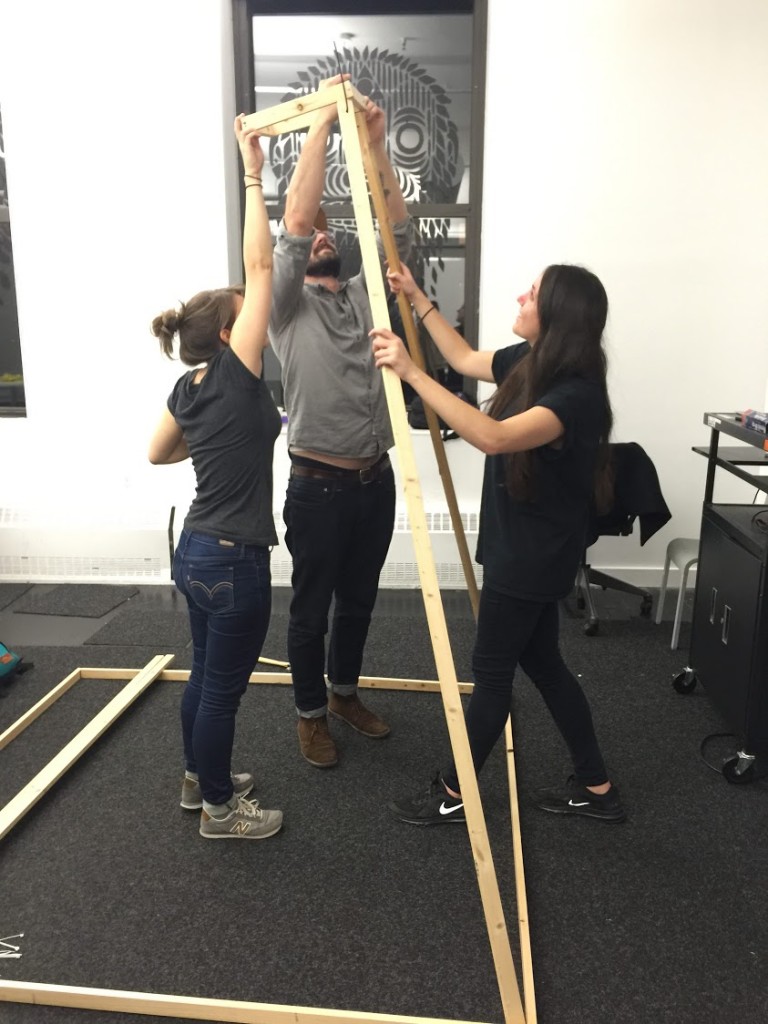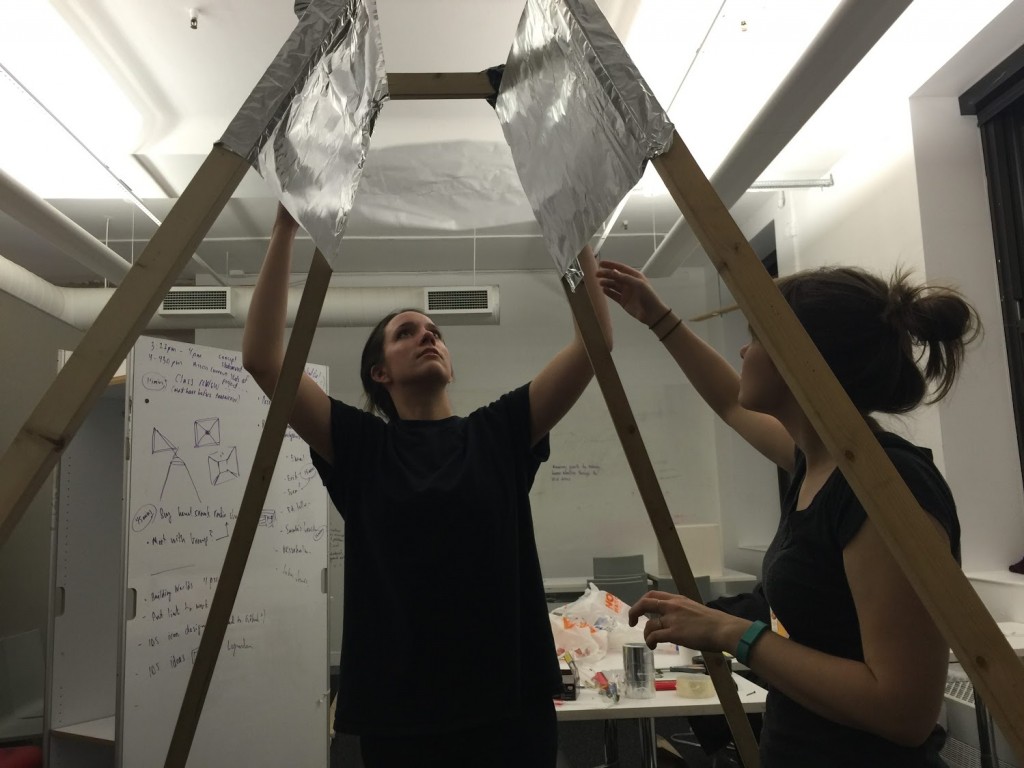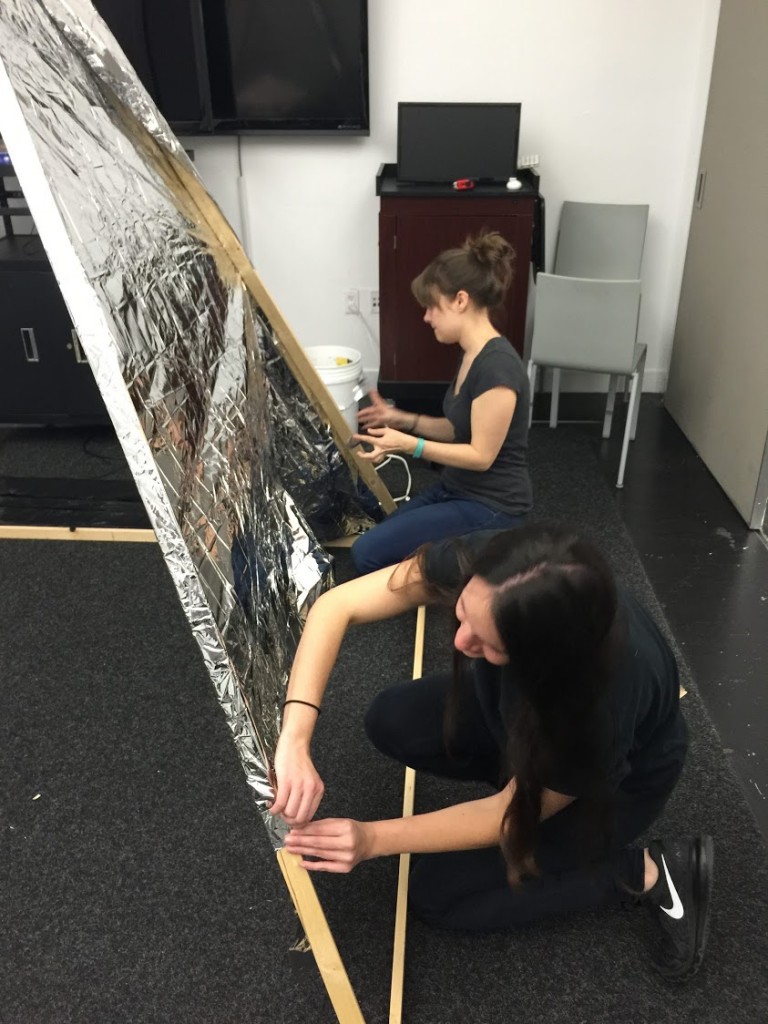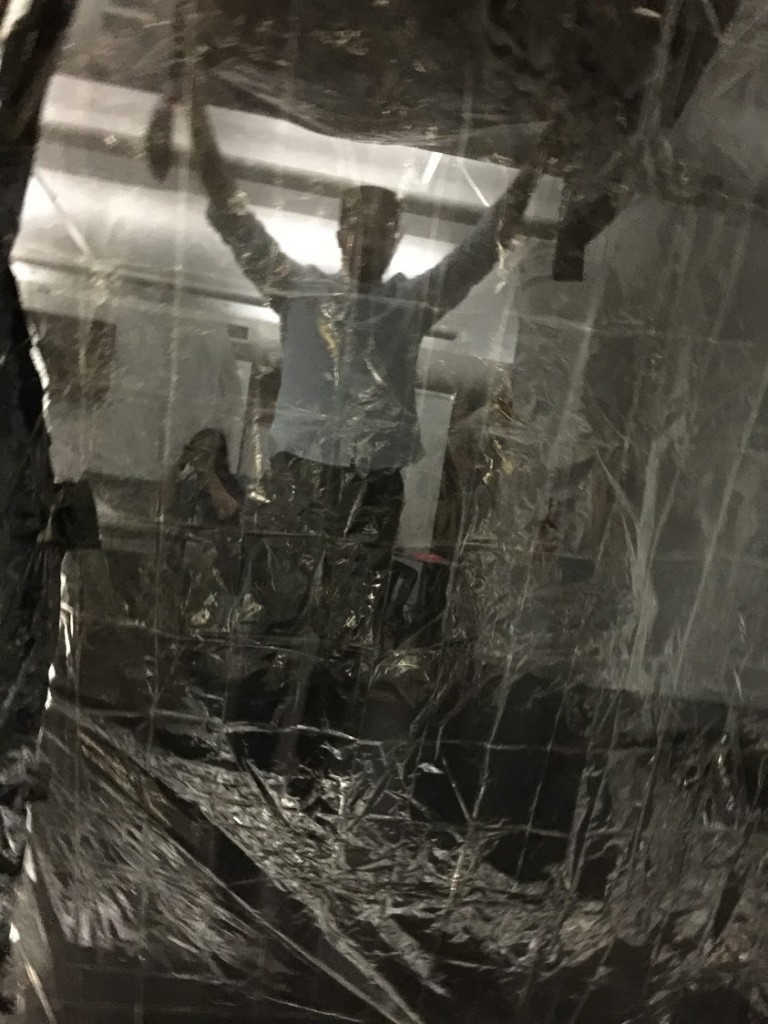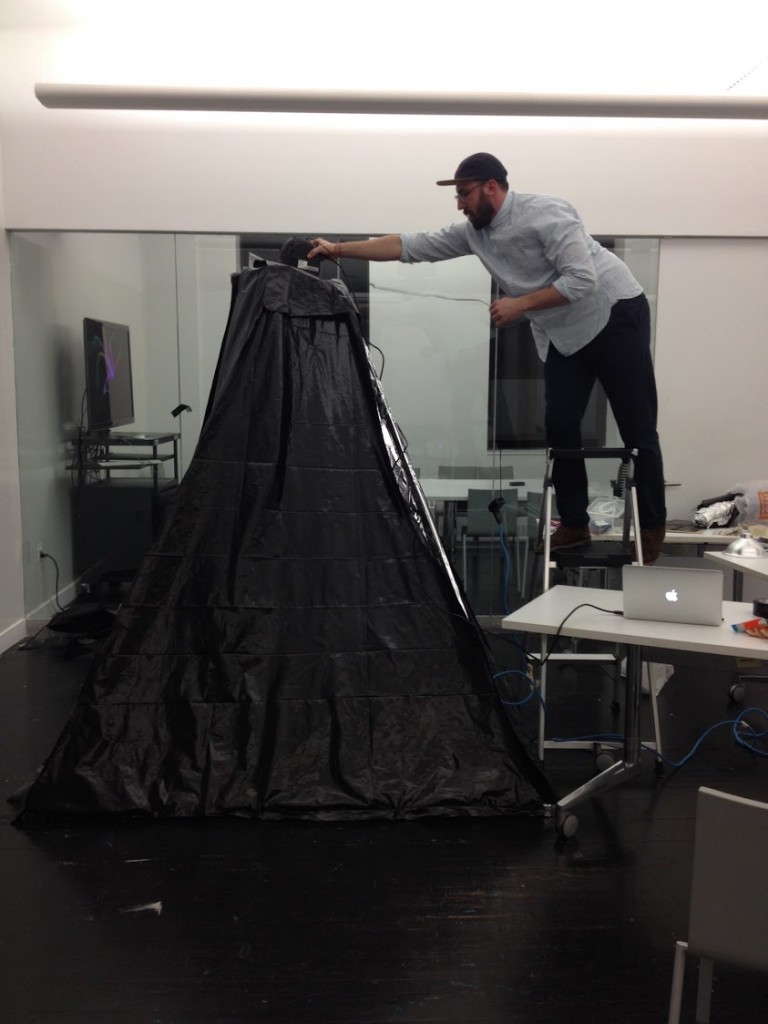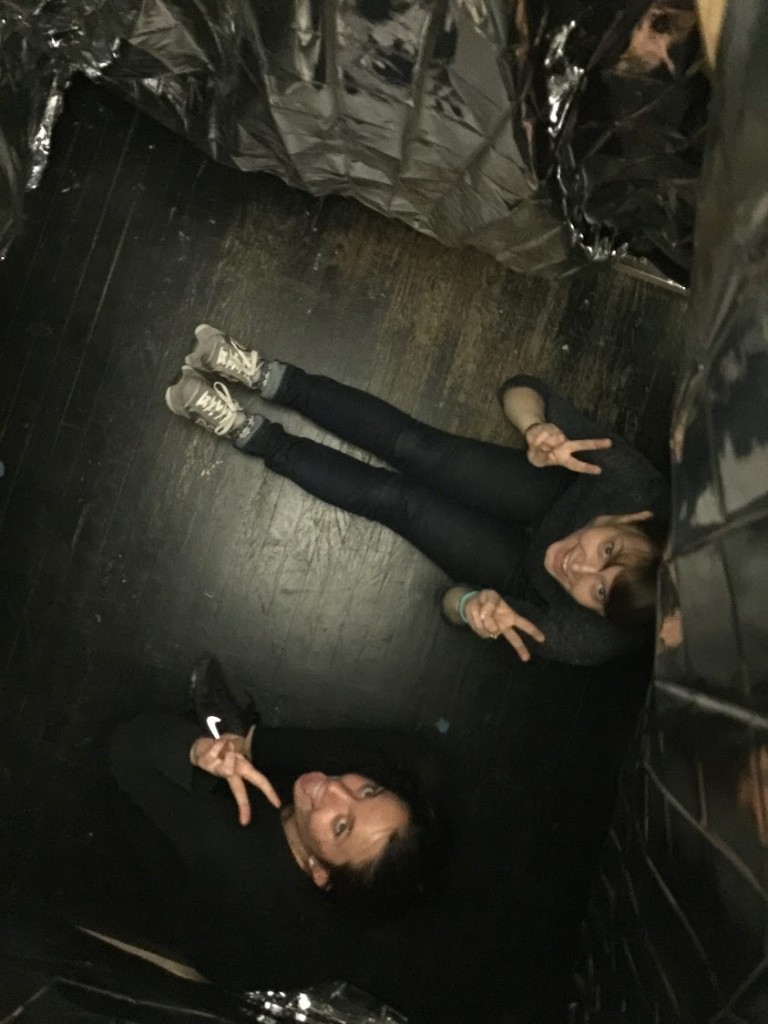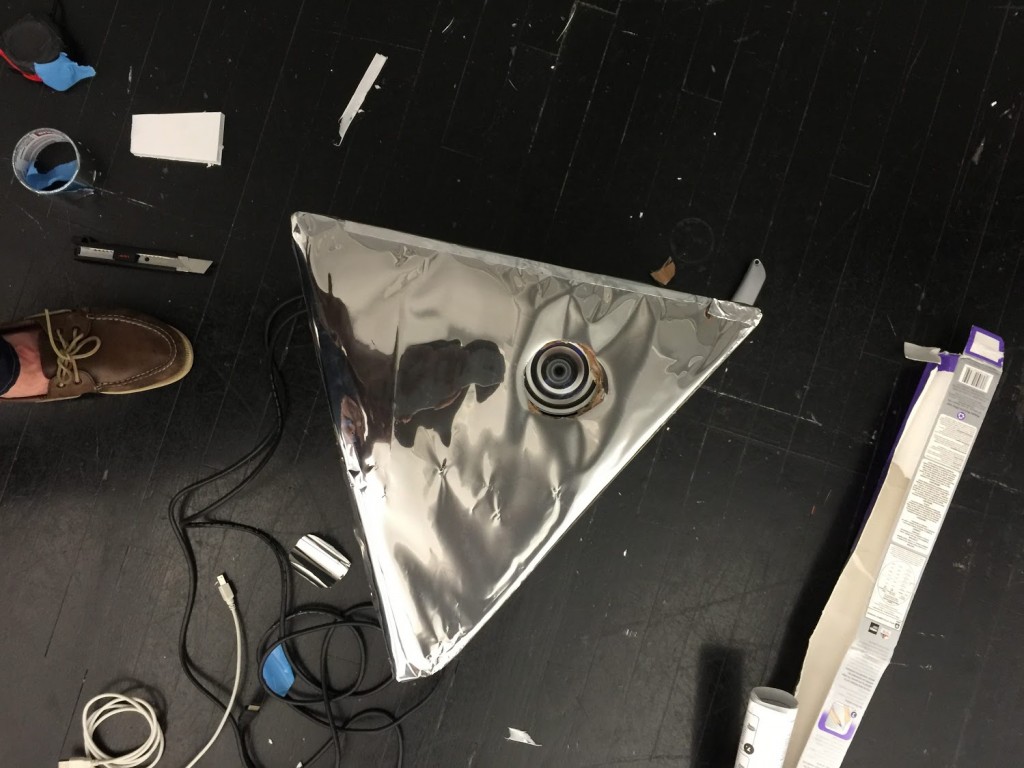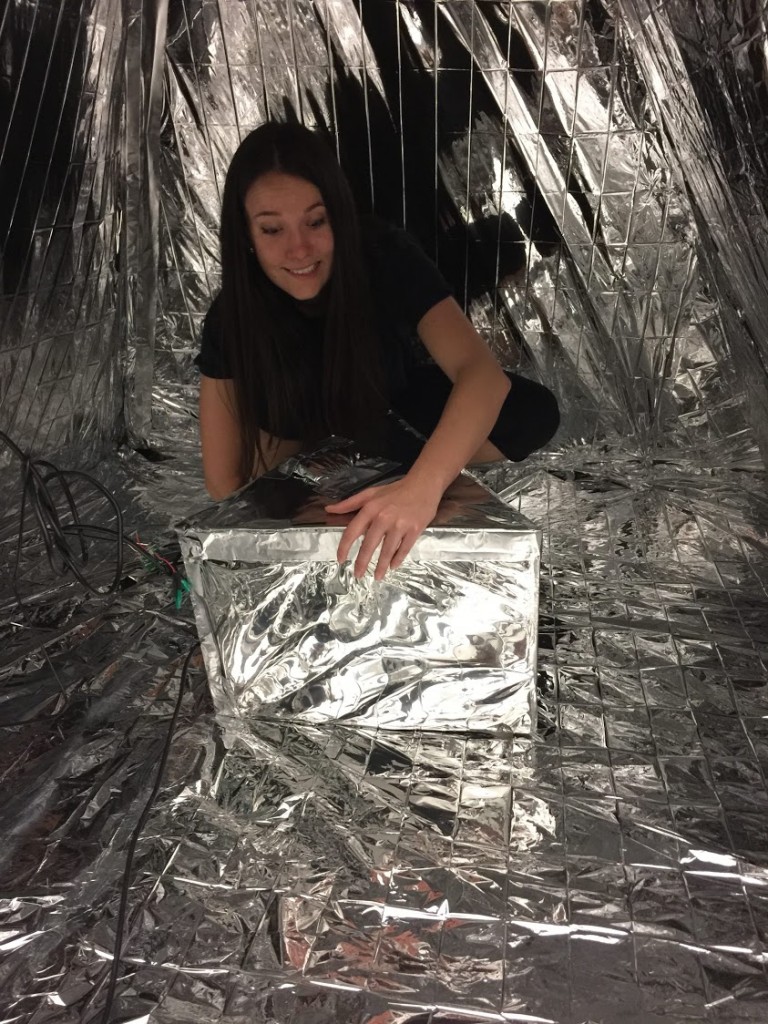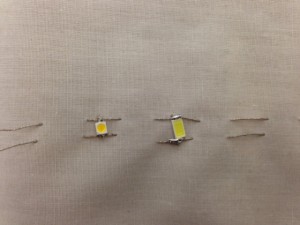People want to share their memories with their pets, but are likely to forget. In the future, people can share memories with their pets using the Pet Pillow. It is designed with soft and cozy fabric so that their pet can feel comfortable. When the owner touches the back side of the Pet Pillow, the sounds that they want to remember will play in order to share both moments and emotions.
Bio-Memory Drive
In 2580, humans have increased their memory capacity by using drives that can be slid into a slot at the base of their necks. This slot is wired with the human nervous systems and their brains, taking in sensory input directly from the human senses. These mini drives can be removed and stored physically, or they can be synched with cloud services, literally with a thought. The files — memories, can be accessed by thinking of the thought, or whatever mental system the user has to access their files.
ArtInMemory
ArtInMemory
Recording sound, and listening while people leave their finger print on canvas. When they want to remind themselves, they just come back and listen. The finger print will reveal just while they are listening to the sound. People will receive the memory from hearing, sight and feeling.
Think about people paint for keeping memory about what they see, hear and feel. This painting is the reflection of memory. People will record sound and voice in order to come back to listen in the same time of leaving their fingerprint on the canvas. The color will change to yellow to allow people know that they already put some memory on this canvas. The voice is like a finger print that has been drawn to keep the memory inside. This can remind people who they are and the memory to visit old place that keep their memory inside. People can come back and leave their new voice and fingerprint before they gone.
Final project concept (WEEK15)
Electronic terrarium
For my final project, I want to create an interactive terrarium sculpture.
Instead of living plants, the terrarium will be filled with electronic components (such as Arduino,resistors,LEDs,wires and motors) combined with fabric, paper and some organic materials.
Different components will have different behaviors when human come close and touch them. Some will become active some will hide away. It will simulates living creatures reacting to human presence.
Draft terrarium :

Precedents & Inspiration:
Ephemerā & Curiosity Cloud By Mischer’Traxler
Glass Domes By Helen Musselwhite
Plant-in City By Huy Bui, Carlos J. Gómez de Llarena and Jon Schramm
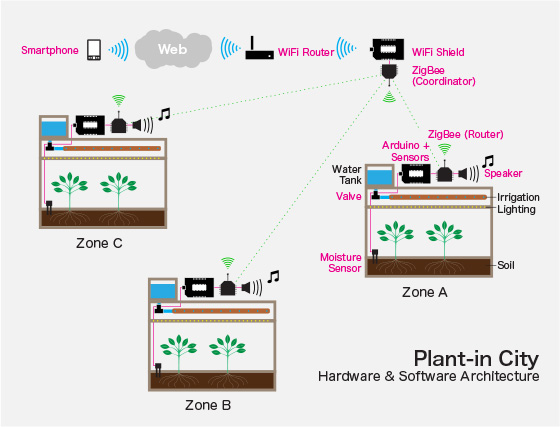
Interactive Terrariums By Stefano Citi & Simone Simonelli
Memory Star (WEEK11-13)
Memory Star is a memory storing tool for people in the future who have trouble sleeping.
Before bed, user simply touch the base and his or her memory will be stored in the star leaving the user a clear mind. User can fall a sleep like a baby without any heavy thoughts.
To reload the memory, user need to touch the wooden panel until the star turns white — allowing the memory to flow back.
Finals Concept: Double Pendulum
I’ve been very fascinated about kinetic sculptures recently. I would like to create a “painting” that is created through mechanical methods, specifically using the double pendulum, which creates beautiful, random-looking patterns.
This has been done with LEDs before:
However, with LEDs, you can’t see the full patterns unless you record or photograph it. I would like to use thermochromic paint that would capture its trajectory long enough to be visual, but will disappear over time to start again.
My two main concerns are how to blend thermochromic pigments with a medium that will allow it to go transparent and be able to spray it evenly onto acrylics, as well as how to wire the spinning arms so that the tips are heated only, but still allow it to spin without getting tangled.
Final Project: In Process
Overview
The theme of the final project is In Process. Over this course, we have discussed and examined processes of different practices and how to apply them to new tools, materials, ideas. We have also discussed how these tools, materials, and ideas influence process, especially in spaces where two processes collide (i.e. sewing and electronics, papercraft and interactive design). For your final project, you may choose whatever concept you like. As you move through this project, you should all consider your process deeply. Be critical of how you are approaching your concept, research, prototyping, and execution. Some questions to consider include: how do materials communicate to ideas? Do materials determine practice? What tools do you use and why? What tools do you want? What theoretical frameworks are you pulling from? How does the audience you are designing for impact your process?
Reprise
You may choose your concept for the final project. It must address ideas, processes, tools, and/or materials we have surveyed over the course. You will be graded on your implementation of the materials and processes we have been studying throughout the semester. You may work alone or collaboratively (this is encouraged). Below are the deliverables and calendar for the last four (!) classes. I will share the rubric for the final project with you next week.
Deliverables
- Working prototype
- In-class 8-10 minute presentation
- Video and image documentation
- Blog post containing all relevant links and reflection on your process
- Instructable documenting how you made it
- At least 2 feedback sessions to a Artisan tech student in Parsons Paris (these can be written via email or class blog or done through skype) – this will be due prior to the final and I will help you link to a student/project there. (See schedule below)
Final calendar
- Nov 29 – Concept Proposal (working title, short paragraph, 1-2 precedents, at least one rough sketch)
- Dec 1 – Updated Concept + Prototype
- Dec 8 – Prototypes for in class feedback + feedback to Artisanal Tech
- Dec 15 – Prototypes + feedback to Artisanal Tech
- Dec 22 – Final + celebration!
Big Picture
As I mentioned, this is in collaboration with the Artisanal Tech course (go to “Workshops” category to see work) at Parsons Paris. It will culminated in an exhibition and workshop/speaker series this spring. This is also part of a larger project called Crafting Tech that hopes to serve as an open platform for eCraft teachers and learners around the world to use in their classrooms and learning spaces.
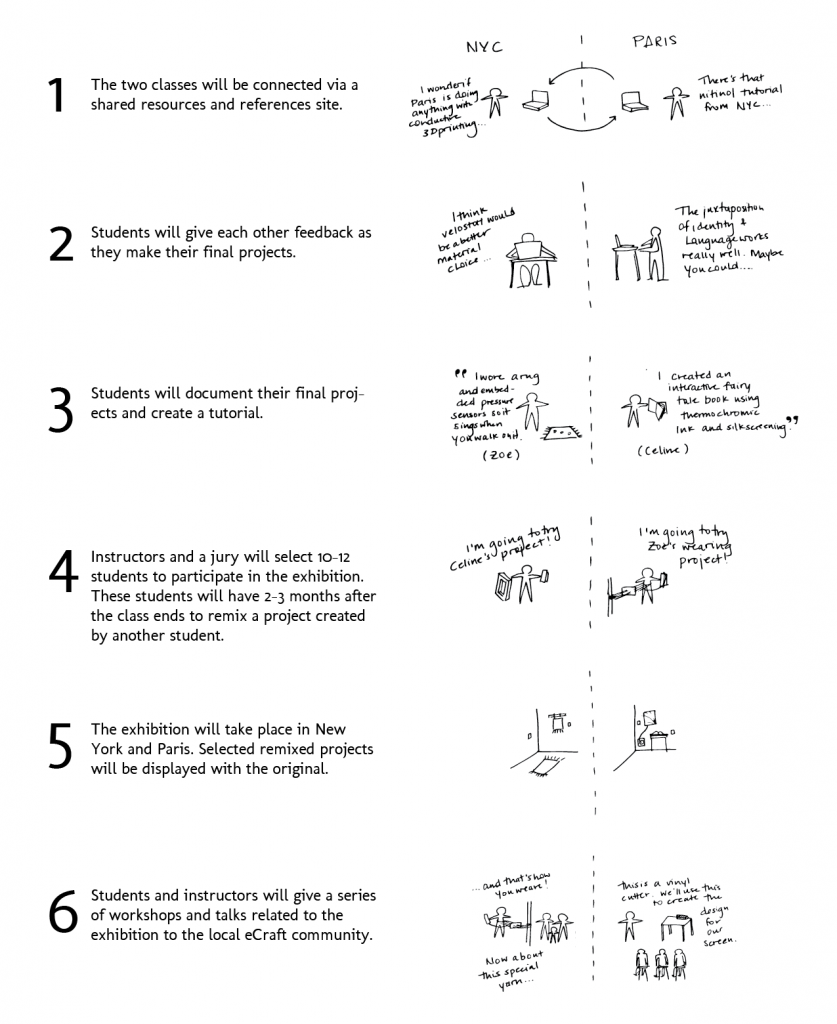
Back to Basics: What’s the Deal with Magnets? (from Hackaday)
Midterm!
Group Members: Charles, Sarah, and Jane
Concept
We first imagined a future in which extremely high temperatures outside would require people to live underground, resulting in people needing some form of light. After discussing a number of solutions for this, including the earth’s surface being completely covered in solar panels and providing power for numerous underground communities, we settled on a more low-tech idea of funneling light down into a cave-like structure, using mirrored surfaces.
Process
After some experimentation, we ended up building a large, 7-foot structure that can be altered and changed to accommodate many situations. The structure is built out of wood and is about 6 feet by 6 feet at the bottom and it decreases in size to about 1 foot by 1 foot as it approaches the top, similar to a pyramid. We looked at a number of different shiny materials for the inside of the pyramid and settled on shiny emergency blankets. The way they catch the light is pretty amazing and they also allow light to come through when light is behind them. We covered the entire inside of the pyramid with shiny material.
We then covered the outside in black plastic tarps that were cut to the exact size of each side of the pyramid. We attached the tarps to the top of the structure so that users can roll them up if they want to allow light to come in or leave them down to keep light out.
We also created a small triangular table that housed a projector that projects bright colors and moving shapes. The projector points up and the colors and shapes are reflected around the entire room. A button on the small table allows the user to both start and stop the projections.
The structure has multiple states that allow for different needs. When the sides are rolled down, light is blocked out and the projector can be turned on. We imagined that these future peoples would value and worship light, and pictured them using this structure to hold religious ceremonies.
When the sides are rolled up, the people inside can see outside, but people outside aren’t able to see them. In this state, these people can effectively hide from the outside world, while still feeling a part of it.
Video of the effect inside…
SMD (Surface Mount) LEDs
Here is a link to a seller on eBay. I like the 1210/3528 SMD size (smaller, thicker ones) and the other ones I demoed with are 5630/5730 (the larger, thinner ones).
